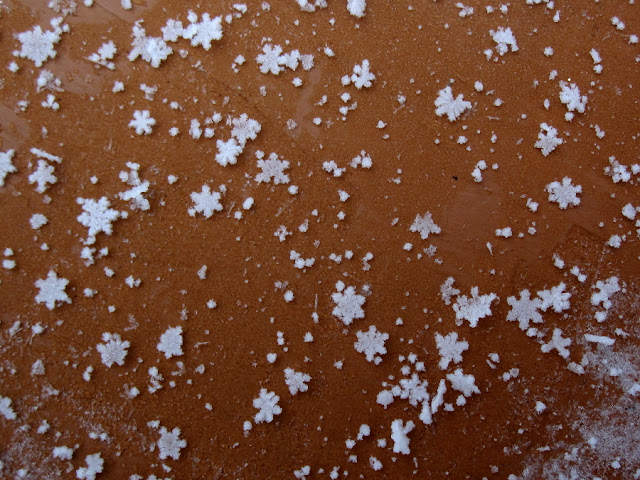 |
| Yes, birds have tongues. |
The White-breasted Nuthatch (Sitta carolinensis) is a small, acrobatic bird that is found throughout much of the eastern and central United States. This species is a year-round resident of deciduous and mixed woodlands, and is commonly found in residential areas and parks.
One of the most distinctive features of the White-breasted Nuthatch is its ability to walk down trees headfirst. This behavior is made possible by its sharp claws and strong toes, which allow it to cling to the rough bark of trees. The bird uses this ability to forage for food, probing crevices in the bark for insects and seeds.
White-breasted Nuthatches are also known for their vocalizations, which consist of a variety of calls and songs. The most common call is a nasal "yank" or "yank-yank" sound, which is often heard in the woods. The bird also has a loud, ringing "whinny" call that is used to defend its territory.
In terms of diet, White-breasted Nuthatches are opportunistic feeders, consuming a variety of insects and seeds. In the summer, they primarily feed on insects such as beetles, caterpillars, and ants, while in the winter, they shift to a diet of seeds and nuts. They also hoard food, caching it in crevices and other hidden places for later use.
White-breasted Nuthatches are also known to be cooperative breeders, with the breeding pair being helped by one or more helpers in raising their young. The breeding pair excavates a hole in a tree, usually in a dead tree or a dead branch of a live tree. The female lays an average of six eggs and both parents incubate them for about two weeks. The young are then cared for by both parents and helpers, if any, and fledge in about three weeks.
In conclusion, the White-breasted Nuthatch is a fascinating and familiar bird that is well adapted to its forested habitat. Its acrobatic ability to walk down trees and its vocalizations, along with its opportunistic feeding habits and cooperative breeding behavior, make it a unique and interesting species to study and observe.
Did that sound a little stilted? Have you heard of ChatGPT? ChatGPT is an artificial intelligence software program that's been in the news a lot lately and has been predicted by some to replace lots of people's jobs in the future, so I thought I'd give it a test. The above description of white-breasted nuthatches is word-for-word what ChatGPT gave me when I asked it to "write a scientific article about the white-breasted nuthatch". It isn't bad, but it is somewhat, shall I say, artificial, so I think my job is safe for a bit longer. But I can envision a day where a web-connected trail camera sends photos to an image-recognition system connected to an artificial intelligence engine that will document what's happening around Lake Wicwas with no human intervention. Then I can just stay home all day like the human blobs in the movie WALL-E.
My own research revealed that the migratory behavior of white-breasted nuthatches is still being studied. It had been believed they were not migratory and stayed in their territory year round, but recent studies have found they may in fact have some migratory behavior, possible being an irruptive species like their red-breasted cousin, meaning they move in mass migrations in years of low food supply in their home range. Because white-breasted nuthatches are such common and widespread birds this is hard to determine without banding specific birds and tracking them, something that a group of ornithologists is starting to do. So maybe this is an irruptive year with low food supply in Canada bringing more white-breasted nuthatches to central New Hampshire, but regardless, I'll enjoy watching them on the feeder, even if they do shovel seeds onto the ground as they dig through the feeders looking for the largest, choicest seeds.
Nuthatches excavate in the feeder to find the perfect seed.
 |
| This is a female. |
Another thing I learned is how to differentiate male and female nuthatches. The female has a slightly gray cap on its head as seen above, while the male's cap is black, matching the shade of its nape just behind the cap. The distinction is slight, but noticable.
Although the larger lakes are still ice-free, Wicwas has between seven and ten inches of good ice on it. There are people out fishing, and the first bob house has appeared.
I saw this on Thursday after a cold night had frozen the surface up nicely, allowing a skating excursion around the entire lake, just before more snow fell. Then on Friday we received a nice snowstorm, one without any rain involved, and the world was freshened up with a beautiful blanket of white - easy to shovel and great to ski on.
As the storm wound down the heavens started sending these perfect snowflakes down to earth.
It's the kind of snow you'd see in a Hollywood movie on Christmas Eve and call it fake.
Whether it was the snow, or the breast of a bird, white was the color of the week, and none of it was artificial.







Scott, no machine can replace your writings, photos or insights. Don't stop, please! Karen T
ReplyDeleteI will echo Karen T's comment! AI is just that - artificial, without the personal touch that your blog brings to those of us unable to experience it in person. I and others in the family so enjoy the ability to keep up with the happening on Wicwas. Thank You! Scott S.
ReplyDeleteYour blog continues to delight! I look forward to them each week. Thank you, Scott!
ReplyDelete